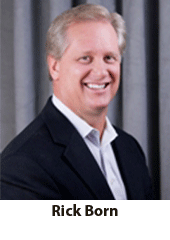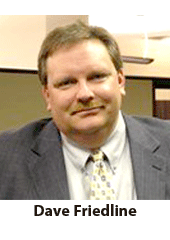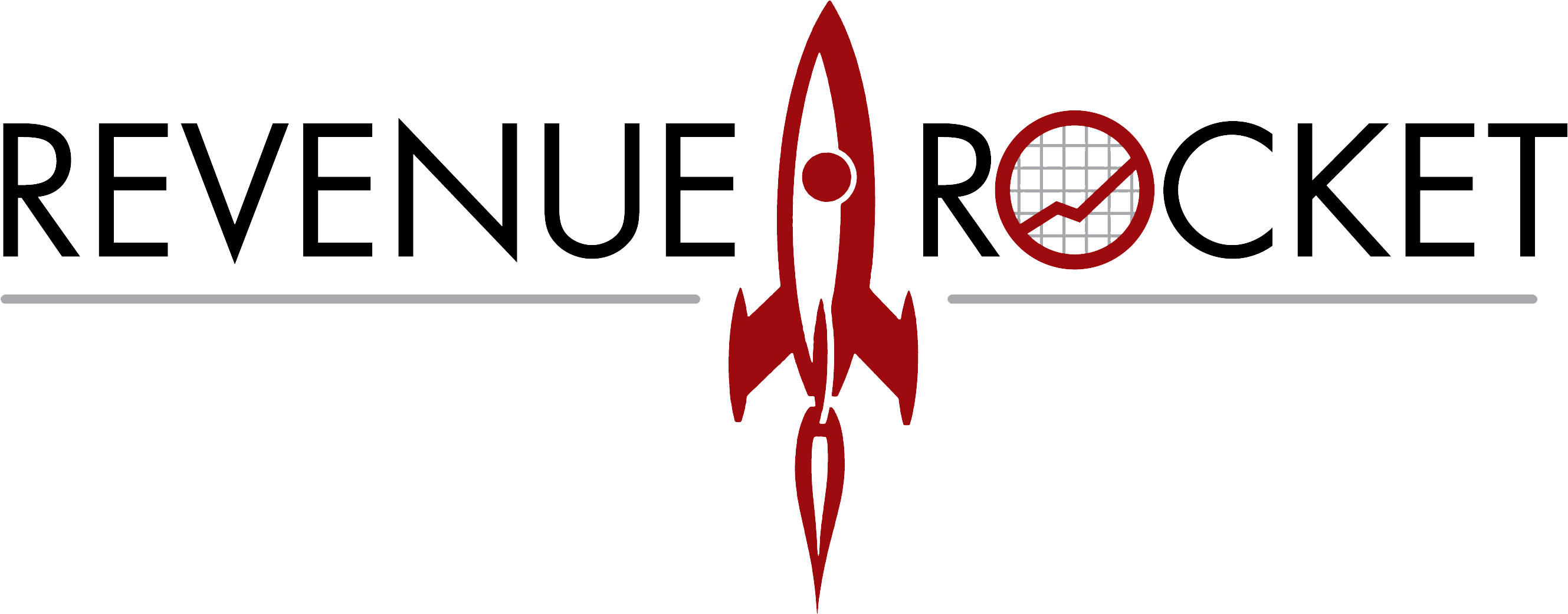22 Nov M&A through the eyes of three IT executives
A Revenue Rocket perspective by CEO Mike Harvath
 We were having a lively conversation a few weeks ago about the calamity that struck the auto industry last year and whether there might be some early warning signs that we in the IT industry might heed; some lessons we might want to learn, some thinking we may want to revisit, some strategies we might want to embrace. While these two gargantuan industries, with combined global sales of $6trillion, are sufficiently different in many respects, they do share some broad similarities that bear considering as IT executives plot and plan the future of their companies.
We were having a lively conversation a few weeks ago about the calamity that struck the auto industry last year and whether there might be some early warning signs that we in the IT industry might heed; some lessons we might want to learn, some thinking we may want to revisit, some strategies we might want to embrace. While these two gargantuan industries, with combined global sales of $6trillion, are sufficiently different in many respects, they do share some broad similarities that bear considering as IT executives plot and plan the future of their companies.
Chief among them is the business model that defines how they go to market. In both industries there is a cluster of global manufacturers, (GM, Ford, Chrysler, Toyota, VW, Microsoft, Oracle, SAP, etc) that sit atop the pyramid, selling their products and services to a vast network of dealers and partners/resellers.
In the automotive industry, the number of dealers now stands at about 18,800, having been pruned from 30,500 in 1970. In the case of the IT industry, the number of partners/resellers that make up this vast network in the US is in the hundreds of thousands. Therein is the “aha.”
The $2.6 trillion automobile industry couldn’t sustain itself with the number of dealers it had, so last year the industry had to shed thousands of dealerships as it sought to find a more profitable marketplace equilibrium. What does this say, or portend, about the $3.4 trillion IT industry and the hundreds of thousands of partners and resellers that make up this market?
We think it portends, in a word, consolidation.
We also think it means that IT executives who want to flourish will have to acknowledge the inevitability of consolidation and arm themselves with a well-defined M&A strategy. Many executives are doing just that, which explains the red-hot M&A market that is reshaping the industry.
While it was the credit crunch that ultimately broke the back of the auto industry, the calamity also revealed one of the industry’s underlying fault lines. There were simply too many GM dealers selling the same Chevys and Caddys to the same customers, and too many Chrysler dealers selling the same Town & Countrys and Sebrings to the same customers, wreaking havoc on profitability as dealers were forced to compete with each other primarily on price.
So, you have to ask yourself, is the prologue for the IT industry to be found in the past of the auto industry? Will the IT industry of the future have to have fewer, stronger, larger, more profitable partner companies that can withstand the agony of a calamity like that which befell the auto industry? It seems the industry is heading that way.
As the 19th century French politician Alexandre Auguste Ledru-Rollin is supposed to have said, on seeing a crowd marching through Paris, “There go my people. I must find out where they’re going so I can lead them.”
Today, in America, you’ll find a number of IT executives who see where the industry is going and have smartly, courageously, and tenaciously decided to get ahead of the trend and lead their companies to a more commanding position in the market, where they will prosper fewer, bigger, stronger, and more profitable.
We interviewed three of these leaders to get their insights and experiences on the role and value of M&A as a growth strategy component, warts and all. They are:
Rick Born
CEO
RBA ConsultingSeth Henry
Founder and President
Arcadia SolutionsDave Friedline
Director, Business Development
NWN Corporation
For those interested in learning more about the Revenue Rocket perspective on how best to employ a successful M&A strategy please click here for our March 2008 enewsletter devoted to this topic.
We’d be interested in hearing from you about your views on and experiences with M&A. You can reach me at 952-835-2333, ext. 101, or contact me via email.
A conversation with Rick Born
 Rick Born is the CEO of RBA Consulting in Wayzata, MN. RBA Consulting is a Microsoft Gold Certified Partner, with core competencies in Project Management, Application Development, Portals and Collaboration, Business Intelligence, Infrastructure and Security.
Rick Born is the CEO of RBA Consulting in Wayzata, MN. RBA Consulting is a Microsoft Gold Certified Partner, with core competencies in Project Management, Application Development, Portals and Collaboration, Business Intelligence, Infrastructure and Security.
What’s your background, and how did you get started?
I spent four years as a RPG computer programmer following my graduation from tech school. I then decided I wanted to try my first endeavor as an entrepreneur and started promoting concerts and events, losing all the money I didn’t have along the way. Deciding I needed to get a job, I interviewed at Lawson Software for a RPG programming job and came out of the interview with a sales job in the Professional Services Division. That division was purchased by Computer Sciences, Inc., where I was made partner. After about a year there I left to start my own company, BORN Information Services. That was in 1990.
By 2000 we had $140MM in sales, 1,000 employees, offices throughout the United States and Canada, and we were a national brand. We sold the company in 2004 to Triumph Capital, who in turn sold it to Fujitsu. In 2006, with the expensive education I received in this business, and after a couple of years off to recharge the batteries, I decided it was time to get back into the game. Soon after, my partner in the company, Mike Reinhart, and I formed RBA Consulting.
What’s your growth strategy for RBA Consulting?
Our path for BORN Information Services was to build a national brand and then take it public. For RBA Consulting, our goal is to focus on fewer markets and become the dominant force in these markets. We want to accomplish what we had in Minneapolis with the BORN brand, which was the biggest IT services firm in Minnesota at our peak, and we want to replicate that success in Denver, Dallas, and maybe one other market down the road.
What are your strengths, what makes you different?
There are a couple of things. One is our legacy. The reason we’re able to grow faster than anybody else right now in Minnesota is because of our history. Another is the talent pool we have. We have about 125 employees and of these, probably 40 of them used to work with us in the old days. We’re kind of a four-year-old company on steroids because of our background.
Another is our focus, which to this point has been a primarily Microsoft solution in portal, collaboration, infrastructure and application development around the BizTalk, .NET and SharePoint platforms. We have an outstanding relationship with Microsoft, working with them in Redmond, as well as collaboratively with Microsoft Consulting Services, which of course leads us to doing a lot of Microsoft work at a lot of big corporate IT efforts.
I think another thing is that you have to have a tried and true process in place. It’s not easy in this day and age to deliver a multimillion-dollar project for a customer. We’ve been in business long enough to understand that you have to have a good process, a good framework, a good foundation in place, which we do.
What’s your overall outlook for the next 18 months?
Because I come from a sales background, I am a glass half-full guy. That being said, 2008 was as ugly a year as I can remember, even dating back to the 2001 era. We started to see the economy turnaround in the latter part of 2009 when a lot of pent-up demand was being tapped. I think we’re seeing that corporate America is starting to spend, they’re more comfortable with their own balance sheets, their own P&L and they’re loosening their purse strings a little bit for both big and small projects.
What do you see are some of the big issues facing the industry?
Overall, it’s the economy and the possibility of a double-dip depression worries me a little bit. Another thing anybody in our business has to worry about is delivering. A lot of companies back in the latter part of the 90’s were able to add lots of people and take on a lot of engagements, but there was a breakdown in the quality of delivery. This is something that we are very conscious of as we grow as fast as we are. On the competitive front, it’s pricing and trying to understand the value of offshore delivery. Clearly there’s value in doing things offshore and I think the whole industry is getting smarter about the offshore piece. Companies are realizing that everything is not offshore applicable and that at the end of the day you do get what you pay for.
What do you see as the trend in M&A going forward?
I think M&A ebbs and flows. There will always be consolidation. I think we’ll see more M&A as the industry starts to pick up. I think you’ll see some of the publicly traded companies finding a need to drive earnings and growth outside of just organic growth. I don’t think you’ll see rampant mergers going on but you’re going to see more than you’ve seen in the past few years. Part of the reason for this is that many of the services deals that got done over the last few years were deals in which somebody was wounded and they had to sell.
What makes an M&A go awry?
To be honest, the majority of acquisitions in the services space don’t go well. If you’re the acquiring company you have to have something to offer the employees of the acquired company that they don’t already have, e.g. more security, better benefits, a better strategic vision, more opportunity, more challenge, etc. Remember, you’re acquiring the contracts of employees and the contracts of customers, and if what you’re offering the employee base isn’t appealing they’re going to leave.
All too often, where these things go awry, it’s when the executives sit back and say, look at these geographies, look at these costs we can take out, the typical things you look at in a M&A, but they forget that really all you’re acquiring is people.
As for deal structures, I personally like to keep things relatively simple. If there’s an earn-out, that’s fine, but it needs to be for a bigger goal. It can’t just be about driving dollars for the next twelve months because that can crater a business for the long term.
I do think that our M&A experience is an asset. It also helps to have been on the selling side of the M&A equation. In the BORN days we sold our Milwaukee and Seattle branches, and we ultimately sold the whole business in 2004, so having been on both sides is an important experience because you know what’s important to the other guy.
You may contact Rick at rick.born@rbaconsulting.com or visit RBA Consulting at www.rbaconsulting.com.
A conversation with Dave Friedline
 Dave Friedline is Director of Business Development for NWN Corporation. Headquartered in Waltham, MA, NWN Corporation provides clients with a complete range of end-to-end networking services and solutions, including technologies from Cisco, Microsoft, HP, EMC and many others. Clients include private and public sector organizations in almost every line of work including major banks, universities, manufacturers, hospitals, and state and local government agencies.
Dave Friedline is Director of Business Development for NWN Corporation. Headquartered in Waltham, MA, NWN Corporation provides clients with a complete range of end-to-end networking services and solutions, including technologies from Cisco, Microsoft, HP, EMC and many others. Clients include private and public sector organizations in almost every line of work including major banks, universities, manufacturers, hospitals, and state and local government agencies.
What’s your background and how did you get started in IT?
I have a degree in Chemical Engineering and worked in manufacturing for a number of years. After awhile I wanted to try something new so I went to work for a recruiting firm, working primarily with engineers. We grew that business, at which point I moved to another, smaller recruiting firm and grew that one as well. From there I made the leap to recruiting in the IT industry, then moved into more financial and partner liaison responsibilities. And now I’m involved in governmental affairs and sales.
You came to NWN as part of an acquisition, how did that come about?
I was working at TiBA Solutions in Greenville, SC, when we began talking with NWN about an acquisition. What made this acquisition work for us was the fact that our market, working in the public sector with state governments, melted down with the rest of the world at the end of 2008. The market was shriveling and we needed more opportunities. From their perspective, NWN was interested in adding another tool to their full-service tool belt, which in our case was our expertise in application development and our knowledge of the public sector.
The cultural fit was apparent almost from the beginning. Their intent was, we’re going to take care of the people, take care of the clients, and then we’re going to worry about business transformation. They understood, as did we, where our assets are, they’re in our seats. And providing the level of service you need to keep clients is too great if you don’t keep the people who have built relationships with them.
What’s your overall outlook for the industry over the next 18 months?
I think what I’m seeing is that the term of panic is over. I think it’s now a position where people are realizing what they’ve got is what they’ve got. It’s not going to be a V recovery. We’re in more of a reset market than a crash and rebound. I don’t think there’s going to be a huge swing back up in the market.
The outlook for state governments over the next 18 months to two years is not looking very bright. This doesn’t mean that there’s no opportunity there, it just means that those opportunities are going to be much more from an MBA 101 standpoint than what I call NBT, the next big thing.
What do you see as some of the trends on the horizon?
I think the big areas of interest in the market over the next three years will be leveraging legacy assets already in place. It’s the turning silos into synergies type approach. Every organization operates the same way, in silos. That is, this is what I’m focused on, how I’m measured, what I control. So breaking down these barriers is going to be important.
Our expertise in our application development center of excellence is connecting what I call the different tribal rocks of knowledge in an organization. Every organization has them; centers of information, of knowledge, that need to be connected. We have the ability to bring out this information and learn how your organization functions.
Another component is going to be more outsourcing to your customers. Pushing information and data entry out to customers, allowing them to make themselves more efficient, to make it easier to do business with them, and for them to have a better customer experience; customer self-service is probably a better way to say it. And with that, obviously, comes all the underpinnings of security and data privacies and the like.
What do you think is the outlook for M&A going forward?
Acquisitions go wrong when expectations are not fully investigated or openly shared. As my father always told me, when you go in with no expectations, you’re never disappointed. It’s all in having the expectations match on both sides.
In any merger and acquisition there are three stories. There’s the person that took over, the ‘merger,’ then there’s the “mergee,” and then there’s what actually happened. And what actually happened has a bigger play than what either of the other two looked at from the beginning. Finding those M&A opportunities that both sides come out of it saying it was successful starts not with a numbers discussion, but more with a cultural or philosophical discussion as to where you are going, what would help to get there, etc.
The bottom line is, any merger and acquisition is about the people and how you handle the people, and how you handle the clients. If you do it only for the numbers on a piece of paper and expect everything to fall in line, then I hate to tell you how woefully wrong you’re going to be.
You may contact Dave at DFriedline@nwnit.com or visit NWN Corporation at www.nwnit.com.
A conversation with Seth Henry
 Seth Henry is the Founder and President of Arcadia Solutions in Burlington, MA. Arcadia Solutions is a healthcare consulting company providing services in the payer, provider and corporate markets, focusing on three areas of expertise: Healthcare Payer solutions, Healthcare provider Solutions, and Consulting Services.
Seth Henry is the Founder and President of Arcadia Solutions in Burlington, MA. Arcadia Solutions is a healthcare consulting company providing services in the payer, provider and corporate markets, focusing on three areas of expertise: Healthcare Payer solutions, Healthcare provider Solutions, and Consulting Services.
What’s your background, and how did you get started?
I got a Masters Degree in Environmental Engineering when no one was hiring Environmental Engineers, so I took a job as a programmer. I started with a company that went public and along the way discovered that I liked the services side of things. After that I went with another start-up called CBridge Internet, which also went public. I soon realized that developing custom Java solutions was not that efficient and that the market was moving to packages, so I joined a division of a company doing services around Siebel. It was at that time that I asked myself, why am I working for other people? With a partner, we raised some venture money and we did a CRM start-up called Watch Hill Partners. After awhile I asked myself again, why am I doing all this work for the venture capital guys, why don’t I bootstrap something? So, we sold Watch Hill Partners in 2003 to MasterCard Advisors and started Arcadia Solutions that year.
How has Arcadia Solutions been doing over the last few years in this economy?
We’re now in our eighth year, and this quarter we’ll break the $20MM run rate. We made a hard decision about two and a half years ago to bet the business on a healthcare vertical. We believed the market we had been in, a systems integrator in a niche category, was pretty finite and we could only take it so far. We knew we had to make a move in some direction and we believed that the go big or go home move was healthcare. We weren’t sure if we were willing to make this move self-funded, so we decided to sell the company, which we did in 2007 to the technology division of the Pohlad Group in Minnesota. We believed we needed deeper pockets to do the risky things that would benefit us in the long-term. We made that move when we were a $9MM business and now we’re going to $20MM in less than three years . . . in a pretty tough economy.
What’s your view on the industry over the next few years?
Actually, I am not as optimistic as others may be about the broad IT services industry. I see the industry facing some big issues in the commoditization of technology, we have a real problem in where we procure the professional talent we need, and I see an imminent cash crunch where spending and profits continue to lag.
I think that the generalist IT services firms are going to have a hard time and they’re going to feel enormous price pressure from globalization. The first gig I was billed out for in 1995, as a basic programmer, was $250, and today I see that work, basically a programmer for rent, going out the door in double digits.
As regards healthcare, this segment of the market is enjoying a rates surge right now from a supply and demand condition. We’ve got regulatory issues driving this, along with a surplus of money on the street, which is creating a temporary shortage of skilled labor. I think this will prove to be a temporary phenomenon, and the market will adapt pretty fast.
I think the firms that want to thrive in the long haul, in any category, need to start blending intellectual property and leverage into the services business. And, I think you’re going to see more service ware companies that can combine data, services and proprietary thinking into bundled packages toward results and outcomes.
I do not think anyone is going to get rich in the skilled people for hire business for a long, long, time. The things I’d be watching are the global and US labor markets and unemployment. Until we reach a level of low unemployment and some advantage to working locally, I think you are going to get continued rate pressure … and this is a single digit margin business. Going forward, smart companies are going to have a strategy that says we have to bake in differentiation and IP; we have a true results differentiation or we’ve got to live with 6 percent EBITDA.
What does the M&A market look like in your segment and for you in particular?
It seems everybody is looking to buy a healthcare technology firm right now. It’s something that a lot of companies didn’t have as a vertical, and now they’re playing catch-up. I think M&A is going to be an interesting play in the next couple of years because there is a lot of pressure to change the way you do business.
What I think this means is that you’re going to see more strategy buys. Firms that have something special are going to get a premium, and they’re going to be in demand. Tactical acquisitions, land grabs, revenue buys are going to trade at the lower end of the multiples. I mean, a $20MM generalist with low margins is going to get 5 times EBITDA while a $10MM specialist that has really figured out the game is going to get 3 time sales.
We’ve looked hard at being the acquirer, and the hard part for us has been there’s a lot of tactical companies with too high of an expectation of what they’re worth, and there aren’t many strategic companies in our space.
What advice would you offer those thinking of an M&A?
I think most M&A situations that go bad are due to the intangibles. In my experience, people place way too much on multiples of earnings or growth projections, and not enough on the “what ifs,” or the strength of the culture, or the quality of the leadership in driving growth going forward. My whole experience on the sell side and the buy side is that there seems to be a lack of creativity about how you go about valuing a company.
Think about it. A consulting firm, a service firm, has few physical assets. They have a bunch of people. So, how do you tell me that you know that consulting firms trade at a range of x or y, when the outcomes from these acquisitions range from shut it down in a year to 100 percent plus annual growth and profitability? What I think people fail to think about is, what is the cause and effect for performance in these businesses? Say I’m going out to buy a $1MM EBITDA services firm. The key question should be which one is capable of going to $50MM and why? Not which one can I get for $8 MM or which one can I get for $6MM.
I think that the companies that do good acquisitions will pay cash. The people who do distress deals and try to squeeze something out of them will back-end the deal. There’s no free lunch. The companies that are performing well right now will command very good prices and they’ll get good terms. And, they will get high growth and high margins. So, I think this market completely favors a strategy buyer and a cash buyer.
You may contact Seth at shenry@arcadiasolutions.com or visit Arcadia Solutions at www.arcadiasolutions.com.


